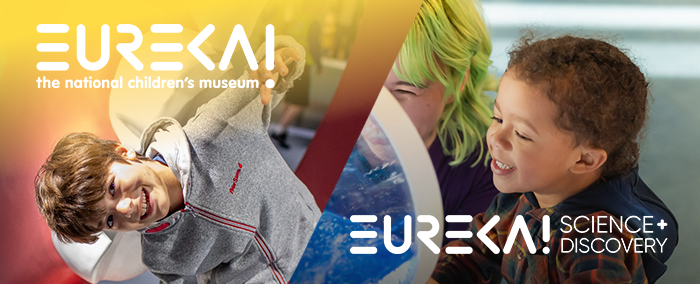Eureka! The National Children’s Museum has been given the top spot in the Independent’s 10 Best Hands-On Museums in the UK. As the only purpose built children’s museum in the UK, we have created an environment that is fully interactive, based on the philosophy of playful learning. We believe that all museums and attractions should allow families to play together and explore freely.
The Independent cited our ‘scores of interactive exhibitions’ (400 exhibits that all offer multiple opportunities for interaction, to be precise!) as the reason for our first place ranking but the image shown is of children mesmerised by a performer at the museum. There is much more to a ‘hands-on’ museum than its physical assets. The design of our exhibits and galleries have a huge part to play, but being a ‘hands-on’ museum is about the whole visitor experience – including the welcome at reception, the map and layout allowing a freedom to explore how and where families choose to, the attitude of staff, the daily activities organised, and even the flexibility of tickets.
Here are our top tips on how to create a benchmark hands-on environment and visitor experience:
1. Think like a child
Children are the greatest explorers because they are endlessly curious and constantly discovering new things. Their imaginations are not limited in the way that adults’ are. Everything we do at Eureka! is based on consultation with children. This allows us to get inside the head and heart of a child when designing exhibits, galleries and initiatives to make them as interactive as possible, to as broad an audience as we can. Children want to climb on, wrestle with and wrap themselves around things – and adults are no different, given the opportunity!
2. Keep it simple
Interactive exhibits don’t have to be complicated. Using simple things like sand, water and moveable/removable objects is the best way to encourage visitors to get stuck in. It’s important to make people curious but be concious that anything overly confusing can be off-putting to adults as well as children.
3. Think about all the senses
Interactivity isn’t all about touch. Some museums have ancient artifacts that can’t be touched for conservation purposes. but there are other ways of interacting with them through noise, smell, taste and sight. You could try mocking up models or samples of artifacts that can be touched and explored through the senses. Fortunately, we don’t have any formal collections at Eureka! so we say ‘play with everything’!
4. Don’t say shhhhhhhhhhhhh!
Some museums ask for silence to be maintained in some of their galleries. We think this should only be imposed where absolutely necessary. Museums are places for debate and new ideas, and should facilitate discussion. The noise and buzz at Eureka! is one clear way to ‘feel’ the enjoyment of the experience.
5. Play the generation game
For a museum to be truly ‘hands-on’ for all its visitors, it needs to work on a number of levels. We encourage families to play together rather than letting parents and grandparents just sit back and observe. We aim to make everything in the museum interesting on different levels, so that everyone can get the most out the experience.
6. Use roleplay and storytelling
Roleplay and storytelling are two of the most important values of the children’s museum movement but they can be used by all museums and attractions to bring the experience to life.
7. Don’t set the agenda
We give families everything they need to work together to explore the museum and take part in activities – but we don’t dictate how or which way round they do it. This means they need minimum intervention from our staff, and the joy of learning through play can be experienced by the whole family, whether on their own or though interaction with one of our team. We’ve also decided to use an annual pass, rather than a traditional day ticket system, which lets our visitors come back as many times as they want over a 12 month period. This means there’s no pressure to see and do everything at once, as you can return again and again, without additional cost.
8. Make the most of all your spaces
There is a great deal you can do to make all your spaces different and engaging on a number of levels. For instance, we’ve made our outdoor eating spaces interesting by providing a restored railway carriage with tabletop puzzles so there can be role play or games whilst families eat.
9. Consider different needs
We believe that an important part of playful learning is accessibility for all, both intellectually and physically. We’re currently working on a project called ‘Helping Hands’ to address barriers faced by families with children with a wide range of different disabilities. Our ‘Break to Play’ project with autistic children and their families taught us how to overcome barriers to our multi-sensory experience for those on the autistic spectrum.
10. Recreate the experience online
We don’t think that the digital world can ever replace the real hands-on learning experience, but social media has made the web much more interactive. We are redeveloping our website to bring the online version closer to the real museum experience, and are ramping up our social media activity to make our online visitors feel more involved and engaged in our journey.
If you want to make your museum, attraction, park, playspace, nursery, school, college, university or community centre more hands-on, our Eureka! Experts are available for consultancy, ideas, advice and support. Also check out our other blogs on involving children in the development of playful learning spaces, creating a family friendly environment and engaging with children with autism and their families.


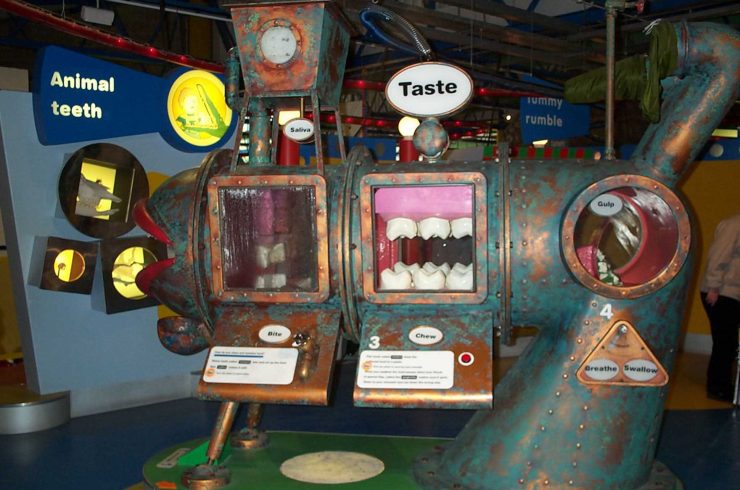
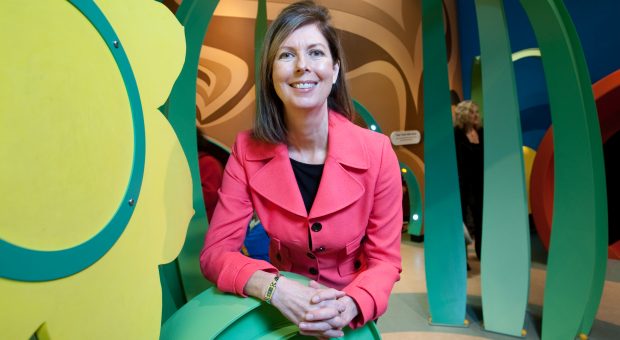
 By: Leigh-Anne Stradeski
By: Leigh-Anne Stradeski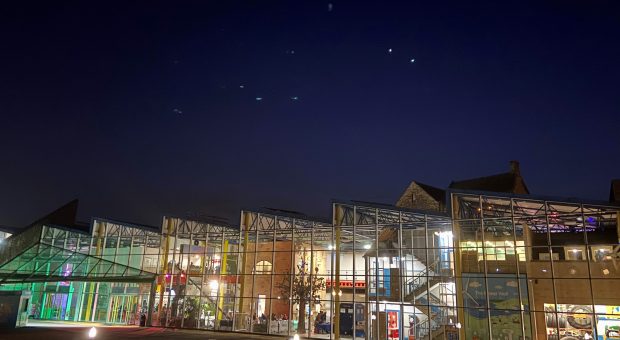
 By: Michelle Emerson
By: Michelle Emerson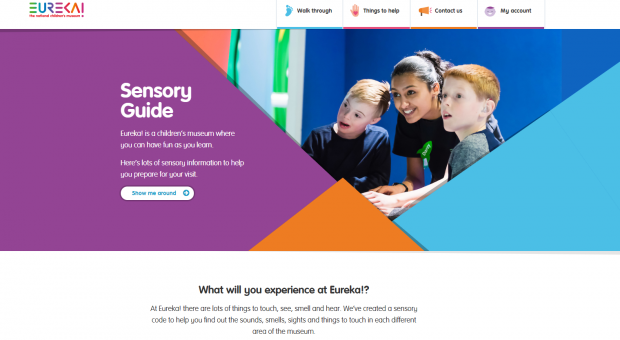
 By: Sophie Ballinger
By: Sophie Ballinger